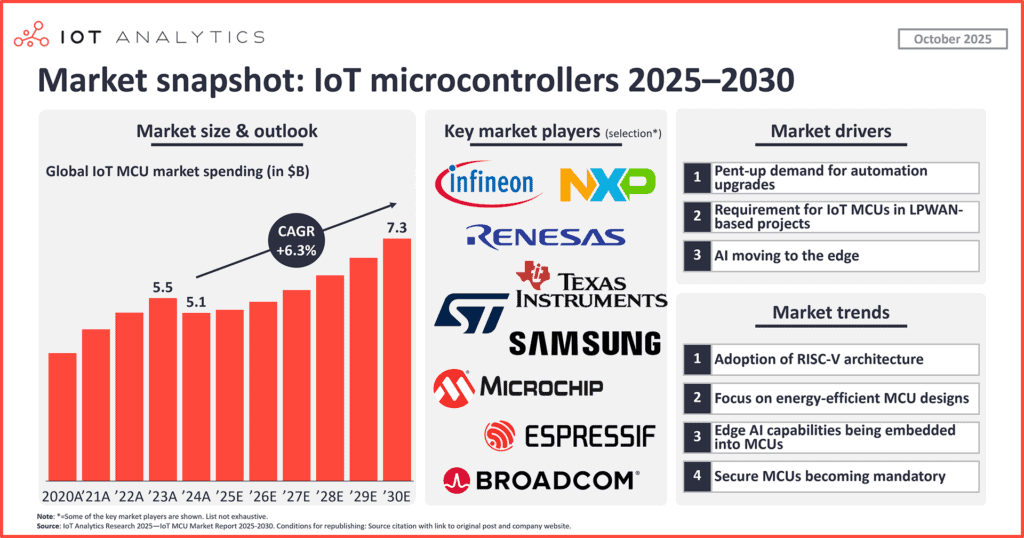As heads of operational technology in Asia look towards 2025 and beyond, the IoT microcontroller unit (MCU) market presents a significant opportunity, projected to reach $7.32 billion by 2030, according to IoT Analytics.

This growth, driven by advances in industrial and edge AI, is poised to reshape operational efficiencies and capabilities across various sectors.
The IoT MCU market, valued at $5.1 billion in 2024, has begun to rebound after a slight contraction. With a CAGR of 6.3% expected until 2030, the market indicates a robust recovery driven by increasing demand for automation and connected devices.
This is particularly relevant for operational technology leaders, as IoT MCUs serve as the backbone of modern connected systems, enabling real-time data processing and control in industrial applications.
Four key trends are shaping the future of the IoT MCU market:
- Adoption of RISC-V Architecture: The shift towards the RISC-V instruction set architecture is becoming a strategic imperative, especially in response to geopolitical tensions. This open-source platform offers flexibility, cost-effectiveness, and enhanced design freedom, allowing for tailored solutions in various applications.
- Focus on Energy Efficiency: As sustainability becomes a priority, energy-efficient design is critical. IoT MCUs are now incorporating advanced power management features to support long-life, battery-powered devices. This trend not only reduces operational costs but also aligns with global sustainability goals.
- Edge AI Capabilities: The integration of AI directly into MCUs allows for real-time inference at the edge, reducing latency and enhancing data privacy. This capability is transforming MCUs into intelligent decision-making hubs, which is vital for applications in smart manufacturing, transportation, and smart cities.
- Enhanced Security Measures: As the number of connected devices grows, ensuring security is paramount. Secure MCUs with hardware roots of trust are becoming essential to protect sensitive data and maintain device integrity. This shift towards secure-by-design MCUs will be crucial for operational technology leaders aiming to safeguard their infrastructure against cyber threats.
Asia, particularly China, is expected to be at the forefront of this market growth, bolstered by significant investments in energy infrastructure and IoT deployments.
The Chinese government’s focus on optimizing its power grid, alongside initiatives in smart cities and industrial automation, positions the region as a leader in the IoT MCU landscape.
Operational technology leaders in Asia must stay informed about these developments, as adopting advanced IoT MCUs can significantly enhance operational efficiencies and drive innovation in their sectors.
With the MCU market evolving rapidly, those who embrace these changes will likely gain a competitive edge in the increasingly connected world.



